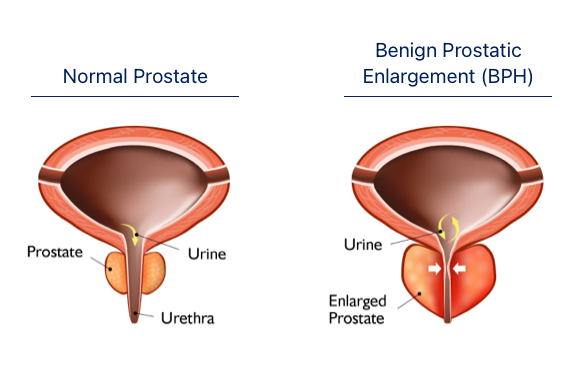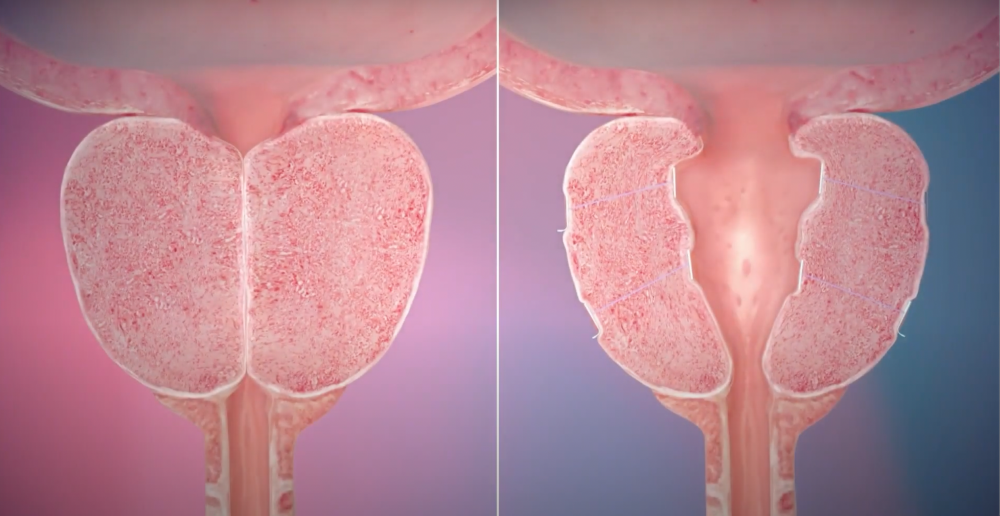
Make Time to See a Urologist for Your Urinary Symptoms
Identifying the cause of urinary symptoms is important for your health, and can set you on a path to improve your quality of life. Visiting a urologist who can conduct diagnostic tests, like a cystoscopy, can help you get to the bottom of urinary symptoms, such as a frequent need to urinate day and night or a weak or slow urinary stream.


Why You Shouldn’t Ignore Urinary Symptoms
Lower urinary tract symptoms (LUTS) can greatly affect one’s quality of life. A common cause of urinary symptoms is an enlarged prostate, also known as benign prostatic hyperplasia, or BPH. BPH is a progressive condition that affects many men as they get older. As the prostate enlarges, it can press on and block the urethra, which can cause bothersome urinary symptoms.If the cause of the symptoms is not treated, complications can occur, such as recurrent urinary tract infections, bladder stone formation, urinary retention and even damage to the kidneys.1
Moreover, if left untreated, BPH can get worse and over time may lead to permanent bladder damage as a result of the obstruction.2
The American Urological Association (AUA) notes that patients with bothersome LUTS/BPH who start treatment with medications and do not have symptom improvement or have unwanted side effects should undergo further evaluation and consider a change in treatment.1
About 42 Million Men in the U.S. Have BPH3
Did you know? Over 40% of men in their 50s, 70% of men in their 60s, and 80% of men in their 70s have BPH.




Understand the Role of Cystoscopy
Knowing the exact cause of your urinary symptoms helps determine the right treatment for you. A cystoscopy is a safe and common diagnostic test that can help you and your physician identify the cause of your urinary symptoms and choose an appropriate action plan. It enables your doctor to visually examine the lining of your bladder and urethra. A cystoscopy can help you and your doctor better understand the health of your bladder and potential options for treatment, if needed.
How a Cystoscopy is Performed
The test is typically performed in a urologist’s office. It can take about 5 minutes and is generally well tolerated. It uses a cystoscope, which is a thin, lighted tube equipped with a camera that enables your doctor to look directly inside your bladder and urethra to evaluate the anatomy.


proudP is an app developed by Soundable Health, Inc.
Check Your Urine Flow Rate at Home
A quick and simple way to check your urinary symptoms at home is to measure your urine speed (urine flow rate) and determine your prostate symptom score using at-home monitoring solutions. Thanks to the latest advanced technologies, a personal urinary health monitor is available to download as a mobile app.
Consider Minimally Invasive Treatment Options for BPH
If you are diagnosed with BPH, you may be eligible for a minimally invasive treatment to help relieve your symptoms.4 The UroLift™ System is the #1 minimally invasive BPH procedure chosen by urologists and their patients in the U.S.3 It can provide better symptom relief than reported for medications,5-6 which have a potential risk of side effects.7-8 The procedure can be performed in a urologist’s office or other medical sites and has a fast recovery time, typically in days, not months.9
For more information visit UroLift.com

What Are You Waiting For?
Early medical examination, including a cystoscopy and, when necessary, timely intervention, can be important to protecting your bladder health. Be proactive and vigilant in understanding your urinary symptoms by using at-home monitoring tools and considering BPH treatments recommended by your urologist.
The UroLift™ System is indicated for the treatment of symptoms of an enlarged prostate up to 100cc in men 45 years or older. As with any medical procedure, individual results may vary. Most common side effects are temporary and include pain or burning with urination, blood in the urine, pelvic pain, urgent need to urinate and/or the inability to control the urge.5 Rare side effects, including bleeding and infection, may lead to a serious outcome and may require intervention. Speak with your doctor to determine if you may be a candidate.
Caution: Federal (USA) law restricts this device to sale by or on the order of a physician.
References
- AUA BPH Guidelines 2023
- Tubaro, Drugs Aging 2003
- U.S. 2022 estimates based on US Market Model 2022-24 (5-17-22 FINAL), which is in part based on Symphony Health PatientSource® 2018-21, as is and with no representations/warranties, including accuracy or completeness. Data on file with Teleflex.
- Urology Care Foundation, https://www.urologyhealth.org/urology-a-z/b/benign-prostatic-hyperplasia-(bph)/treatment/less-invasive-surgery, accessed 2/9/24
- Roehrborn, J Urol 2013
- AUA BPH Guidelines 2003
- Lusty, J Urol 2021
- Bortnick, Rev Urol 2019
- Shore, Can J Urol 2014



